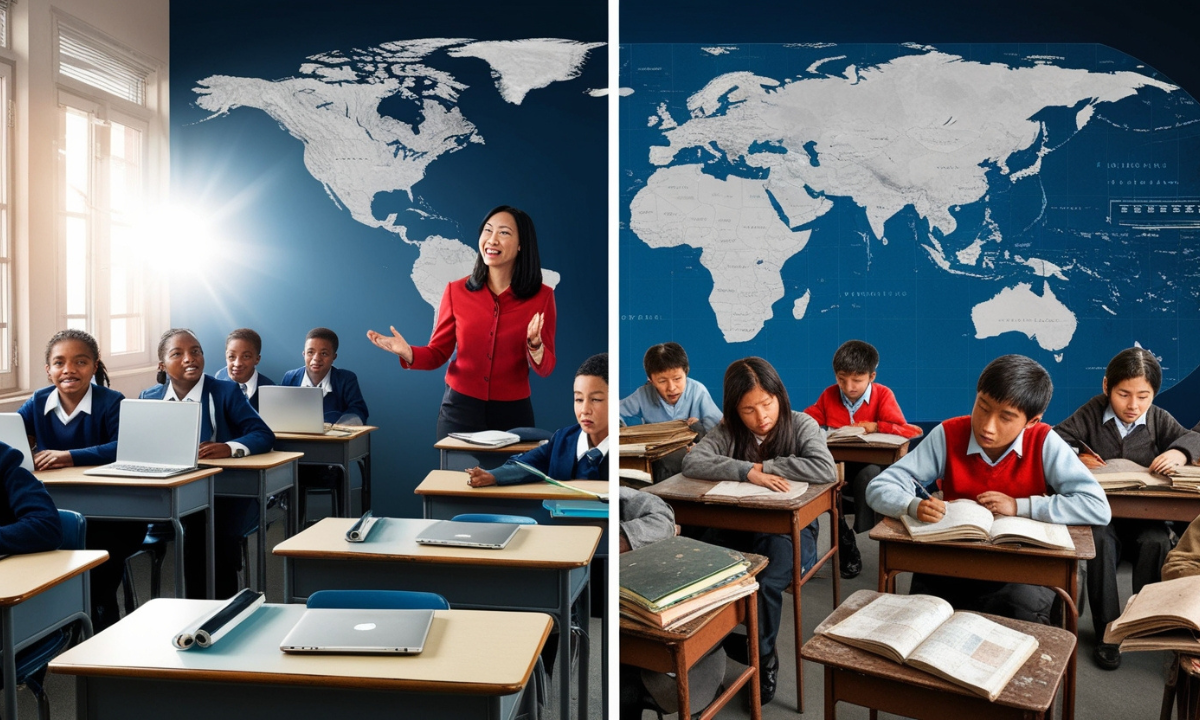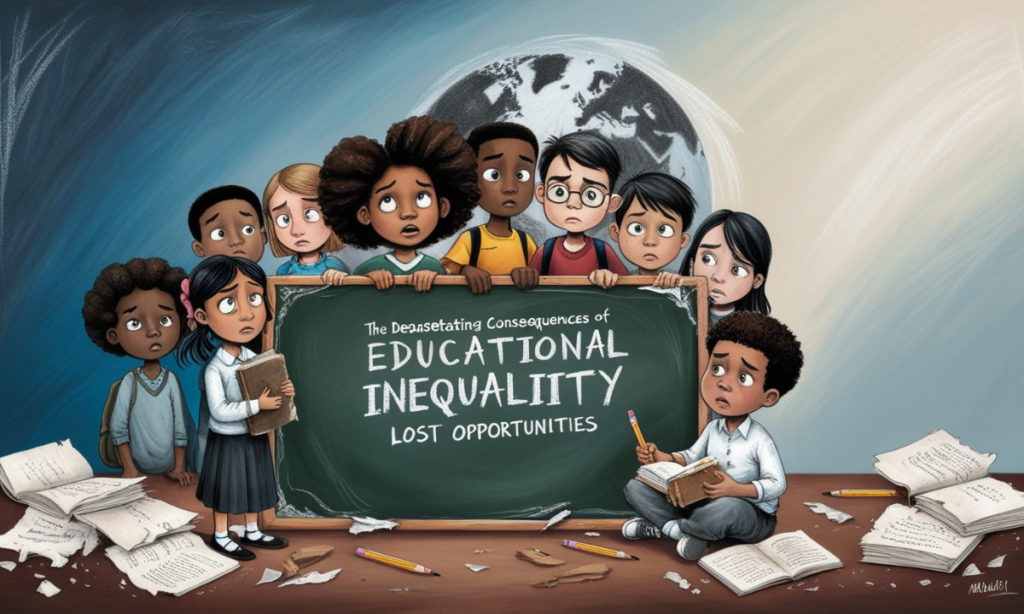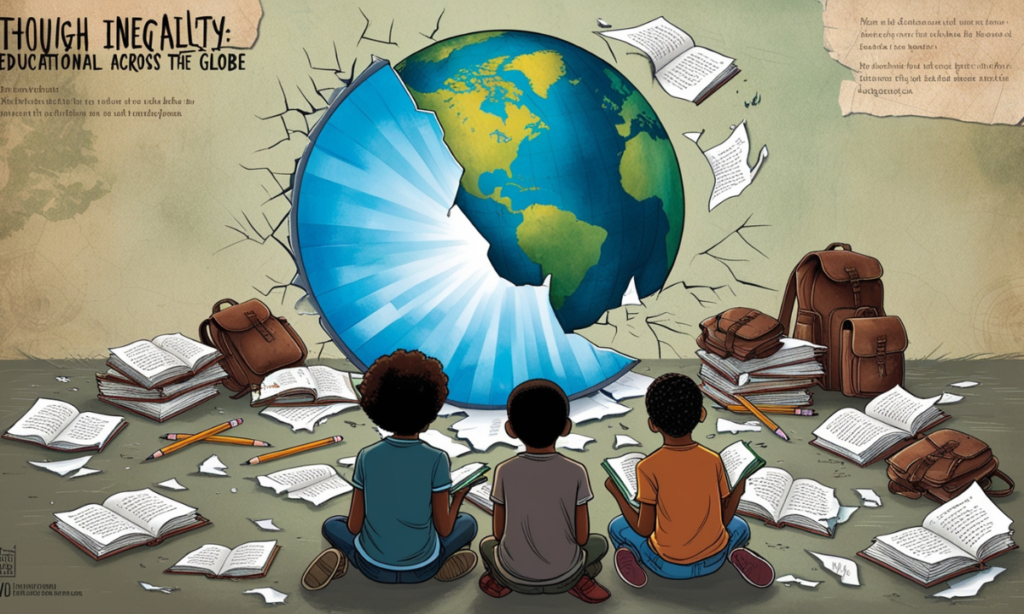Inequality within the educational process is one of the ancient sores that has existed from time immemorial and has taken different forms in causing differential accessibility toward good education. Usually, these inequalities are more intense in poorer classes or communities, feeding into backwardness, marginalization, and inequality, which in turn leads to poverty. In this article, we will examine what educational inequality is, what causes it, and how it affects the lower socioeconomic population around the world.
You can also read What is classical education and how does it work
Key Takeaway
- Educational inequality results from unequal access to resources, disproportionately affecting underprivileged communities.
- Socioeconomic status, geographical location, and cultural disparities contribute to educational inequality.
- Educational inequality limits career opportunities and perpetuates poverty across generations in disadvantaged communities.
- Both developing and developed nations experience educational inequality, although the factors may differ.
- Addressing educational inequality requires government intervention, community efforts, and innovative educational models.
Introduction to Educational Inequality
Educational inequality is a vital resource imbalance. Economic inequality relates to resource imbalances. Many educational endeavors always have price tag processes. A price tag is always in many educational endeavors, so the icing will involve the potential academic achievement and even the socioecless privileged communities of various groups. The communities that are not so privileged suffer the most frames, and other isolated groups suffer the most from most of these inadequacies.
Injustice in education occurs in an array of ways:
- Access to resources: Disparities in funding lead to differences in the building, availability of learning materials, or school staff in favored and unfavoured regions.
- Quality of education: Further differences may arise due to inequalities in the curriculum adopted and the teaching styles employed in various regions.
- Outcome: Disadvantaged students are less likely to complete their classes. To eradicate the problems marginalized sections of society face, it is necessary to analyze the reasons and effects of educational inequality.
Causes of Educational Inequality
Socioeconomic Factors
Socioeconomic status is one of the most critical factors in creating the educational gap. Many students from poor economic families face many challenges limiting them from excellent difficulties, including:
Many poor students cannot obtain basic materials, such as textbooks, school uniforms, computers, other training devices, or internet connectivity.
Wise nutrition and health care contribute to the child’s attitude and level of performance in school. Hunger or sickness during staying at home or inability to concentrate keenly during class toons. Parents living below the poverty line may be uneducated, too, and it’s hard for them to help their children study.
Children of wealthy families, on the contrary, usually receive education in better schools, get private, and attend other activities that broaden their educational background.
Geographical Barriers
Location is a large contributor to educational inequality. Students in rural or isolated areas often lack resources such as school enrollment, transport means, and trained teachers. Some rural schools are poorly constructed, fully equipped with obsolete materials and technology, and cannot compete with modernized schools.
Primary cities also contain imbalances in their resources. For example, inner-city schools in areas with poor social and economic status are frequently crowded and lack adequate funding, making studying there very difficult.
Cultural and Ethnic Disparities
Cultural and ethnic differences in countries also influence disparities in education. In most countries, minorities continue to experience structural discrimination, which, in turn, results in different educational outcomes. Such inequality may arise as a result:
- Language barriers: Children who are not native speakers of the teaching medium are disadvantaged because they may not compete favorably with their counterparts, which can adversely affect their performance.
- Cultural bias in the curriculum: The dominating culture in some education systems may be more prevalent than the rest, and minority learners loathe or feel sullied by the teachers, and school administrators do not seem to have In most cases, students from for improvement for students from minority groups towards improvement from their level-sool administrators, which can, in turn, hurt such stustudents’vels of motivation and achievement.
Government Funding and Policy
One of the most critical aspects of the education system, especially in how it can fight or reinforce educational inequality, depends on education. In several nations, schooling depends on residents’ contributions, and since some areas are wealthier than others, they will, therefore, be able to invest more in their schools. This disparity leads to and is corroborated by the following discrepancies:
Schools in rich regions are usually very well equipped with programs and technologies, including extracurriculars located in poor areas in poor reprogramsvities programs and technologies. In contrast, poor people have very little support for even basic structures.
Due to high tuition, highly supported schools usually have very qualified and experienced teachers, while disadvantaged schools have government policies that prevent them from hiring even the necessary ones.
Government policies that do not work towards improving these gaps tend to create more problems than solutions, as they still leave poor people with little or no chance of improving their educational activities.
Effects of Educational Inequality on Underprivileged Communities
Limited Career Opportunities
A more direct consequence of educational injustice is the restriction of career options available to impoverished populations. Individuals who do not have access to quality education are unlikely to acquire the knowledge and skills they acquire through suitable employment.
Lower-paying people
who don’t go through a job education are most likely bound to go for unstable, low-paying jobs, worsening the poverty cycle.
Lack of higher education opportunities
The disadvantage of educational inequity is that higher education, considered essential for most lucrative job options, remains out of reach for many people. Fewer students from lower social classes attend college or universities, further limiting their career options.
Perpetuation of Poverty
Processes of educational inequality are of great significance in the cycle of poverty reproduction across generations. When children from poor households fail to get sufficient education, they will most likely remain poor adults. There is thus a cycle where poverty restricts education, and poverty is further intensified by lack of adequate education.
Intergenerational effects: The very same parents who suffered the consequences of lack of education cannot encourage their children to learn because of limited educational qualifications, which renders them disadvantaged.
Economic stagnation: Places with residents with national inequalities tend to stagnate because the workforce lacks the optimum qualifications for innovation and growth.
Mental Health and Well-being
Educational inequality also exerts outsized disadvantages to the mental health and well-being of learners belonging to marginalized families. Coping in an under-funded and poorly developed educational environment may cause:
Increased stress and anxiety: Students who do not get enough guidance or necessary materials to help them in their studies run a high risk of being stressed and anxious because they tend to fall behind the learning border.
Low self-esteem: Constantly being in a class with students who seem to perform better than you academically due to their socioeconomic status can demotivate and lower one’s morale.
Higher dropout rates: The kind of pressure that students in poor schools undergo creates scenes that raise dropout levels, making these chances for their future fatally thin.
Educational Inequality Across the Globe
Educational Inequality in Developing Countries
Despite the positive achievements made through intervention in educational projects, the situation is still often aggravated by the low country bases, conflict, and poverty in the low country bases, conflict, and poverty in most of these countriescularly young girls’ education in rural areas. These challenges are:
- Insufficient schools: Some regions in the countryside are not conducive to a school system. The schools could be quite a distance from the pupils who want to attend classes, and in extreme situations, pupils might not even have had schools to go to.
- Gender disparities: In some societies, female children are not allowed formal schooling, whereas their male counterparts are. Instead of pursuing education, parents and girl children are often and broadly somewhat prepared for marriage or house chores.
- Conflict and instability: Conflicts, wars, and instability impede education because they disrupt education systems, leaving children without stability and security.
| Country | Primary School Enrollment (%) | Gender Disparity in Education |
|---|---|---|
| Afghanistan | 55 | High (girls significantly less) |
| Sub-Saharan Africa | 76 | Moderate (but improving) |
| India | 93 | Moderate (rural areas worse) |
Educational Inequality in Developed Nations
The educational systems in developed countries may be more robust than those in less developed ones, but there are still existing educational inequalities. There are certain groups, such as ethnic minorities, immigrants, or those living in poverty, who are still locked out. Take, for instance:
- Racial disparities in the U.S. U.S. efeffortsust be dedicated to students who are African American, Hispanic, or Native American, as these individuals are more likely to attend low-performing, . These poorly funded schools contribute to lower graduation rates and score mastery than their white counterparts.
- Immigrant challenges in Europe: Several immigrant children encounter language problems and are isolated socially in some countries, which hamper their education.
| Country | Secondary Graduation Rate (%) | Ethnic Minority Graduation Gap (%) |
|---|---|---|
| United States | 88 | 15% (Black and Hispanic students) |
| United Kingdom | 91 | 12% (minority groups) |
| Germany | 87 | 10% (Turkish and North African groups) |
Solutions to Combat Educational Inequality
Government Interventions
Education is a societal problem that can be tackled with the required. Proper assistance is needed for appropriate policies; the government can help eradicate educational inequality by offering equal opportunities to study funding.
By giving more funds to schools located in poor a by giving more funds to schools located in poor areas by giving more funds to schools located in poor regions fair balance between rich regardingalificationsicationss can be achieved
For instance, regarding qualifications, it is wise to skill up teachers before hiring them. Qualified teacher programs should be employed in unqualified and untrained regions where possible.
Free or subsidized education
Providing free or subsidized education, materials, food, and transport can help ensure that the socioeconomic status of underprivileged students does not deter them.
Community and NGO Efforts
Despite various efforts to achieve equality in education, there always seem to be missing stakes on the part of non-governmental organizations and communities. Most of these provide aid where governments fail as well:
After having carefree programs and tutoring, I learned that they offer resolutions to students with learning problems caused by a lack of proper education. Many NGOs also help low-income families with further schooling. Assisting parents in knowing how best to help their children in education can be vital.
Innovative Educational Models
Forty years after feminists introduced different methods of pedagogy, like detailing the various techniques of fraction addition, we observe children learning mathematics by expressing their concerns about a situation involving one cup and one-third. So many new ideas have arisen over the past decades, and the latest science development trends make it possible to solve every new problem more creatively.
Infrastructural issues are factors associated with society’s social, physical, and organizational constructs that moderate and inhibit school neighborhood access. These, including economizing on the child’s commute to school and altering working schedules to meet the child’s calendars or requirements.
My Opinion
Education and, more particularly, educational disadvantage everywhere is a wicked problem as millions of his pupils, and many more across the globe and poor communities in particular, confront day in and day out. The next plausible complication shoots from the center; this multidimensional issue is foreign in so many people’s perceptions and instead only interpreted at face value policy action and funding.
Promotion is beneficial to mitigate the educational gap, along with assimilation approaches, and change of government programs is an organizational method. It will take the mobilization of people’s will in the same manner that movements for people’s rights changes have done to improve access to women’s rights for people who are currently left behind.
Reducing the education gap is not easy; nevertheless, it is vital for increasing social equality, diminishing the intergenerational transmission of poverty, and providing a fairer and more prosperous economy for the coming generations.


